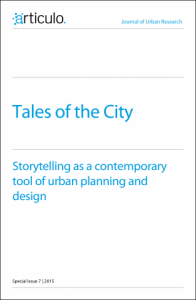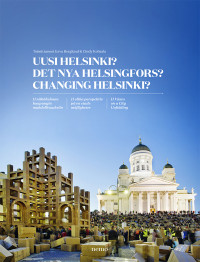As readers of this blog know, I’ve been working for some time now on narratives in city planning, and storytelling as a concept for understanding layers of meaning in the city, as well as the rhetorics underlying urban development.
In planning theory and urban studies, a range of scholars are working with these issues, but the efforts are somewhat scattered -narrative theory in planning or urban studies is anything but an established field of study, and there are various assumptions of what this discipline should be about – discourse analysis? poetics of architecture? participatory planning? urban history?
Nevertheless, it would seem that this field of study is gathering steam and critical mass – and I hope my own work, as well as the work done at the Helsinki Literature and the City Network, the Ghent Urban Studies Team, and other groups, will contribute to this growth in depth and latitude.
New publications dealing with these issues give evidence of the richness of this burgeoning discipline – the latest I came across being “Tales of the City“, a special issue of the journal Articulo.

Strangely enough, and regardless of the journal’s title, the introduction does not explicitly refer to Ruth Finnegan’s seminal “Tales of the City”, which certainly should act as one possible point of departure of any study dealing with narratives in urban planning.
The intro, by Christophe Mager and Laurent Matthey, would seem to understand urban narratives first of all as the production of rhetorics in city planning, something aloof from the actual built environment – dealing, in other words, with an “urbanism that tends to substitute narrative production for real production of cities and territory” (Mager & Matthey 2015). The result may, intriguingly, in their point of view be a democratic deficit:
”storytelling is supposed to have led democratic communication off track through a pronounced concern for a good story, storytelling applied to the field of urban production may have led to an increasing preoccupation with staging and showmanship in projects to the detriment of their real inclusion in political debate” (Mager & Matthey 2015).
My own point of view of how narrative permeates current urban planning is quite different – of course, some of the narrative activities is primarily bound up with rhetorics, grand visions, the “good story”, marketing and branding newspeech, as separated from the drudgery of actual planning practices. But those planning practices are also informed by continuous processes of storytelling, and they are very much part and parcel of the “real production of cities and territory”, as Throgmorton, Van Hulst, and others have shown.
Reading “Tales of the City”, I can’t help but think that there continues to be a need for a narrative theory that distinguish between the various kinds of naratives used in the context of urban planning (cf. my 2014 article in the Finnish Journal for Urban Studies).
To be continued.




